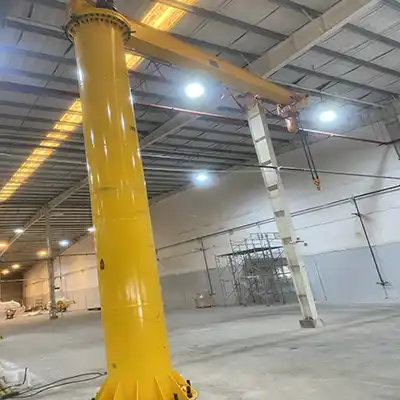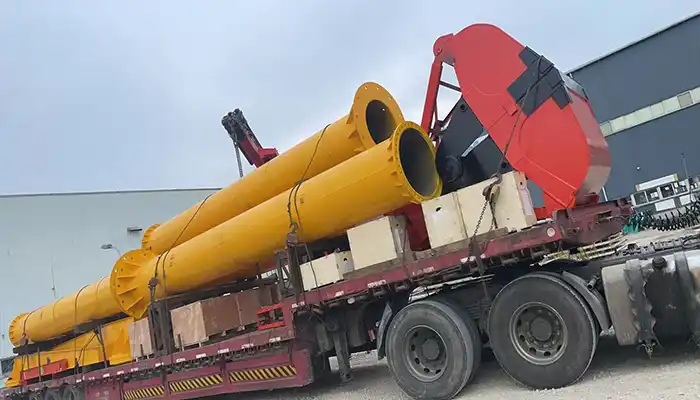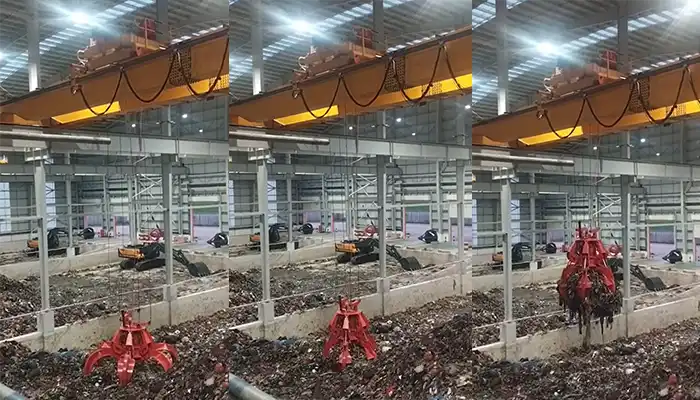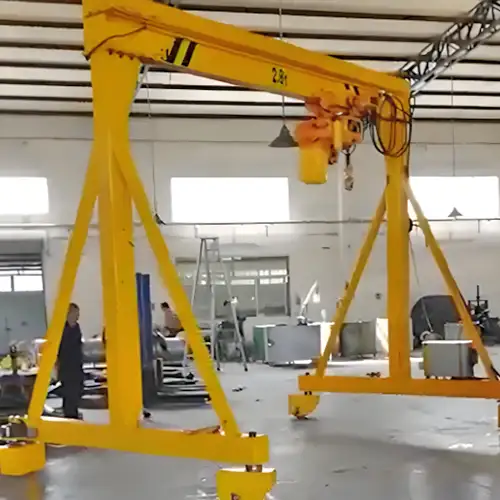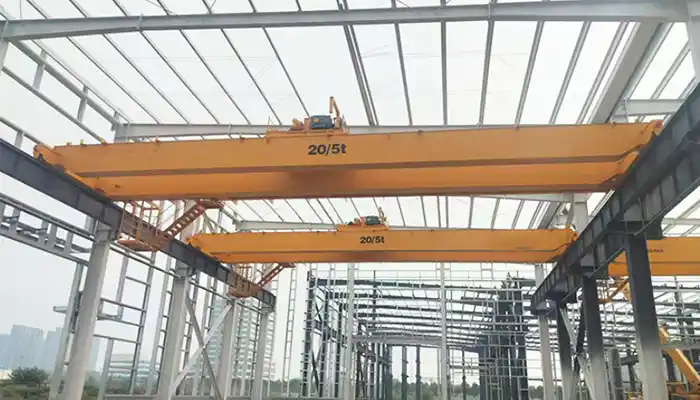
Crane Tonnage Selection for Multi-Use Facilities: Key Considerations
Overview of the Challenge
Selecting the right overhead crane tonnage for multi-use facilities can be a tough task. These facilities have a variety of operations, each requiring different lifting capacities. Some days, your overhead crane will need to handle heavy loads, while other times, it’ll only need to lift lighter materials. Finding the right balance in crane tonnage is essential to ensure the equipment works well across all tasks without wasting energy or resources.
The real challenge is choosing an overhead crane with the right lifting capacity. If the crane is too big, you're paying for more power than you need. If it’s too small, the crane may not be able to handle heavier tasks. It’s all about finding that sweet spot where the crane is neither over nor underpowered for your operations.
Importance of Choosing the Right Tonnage
Choosing the right overhead crane tonnage can greatly impact your facility’s operations. Here’s why:
- Efficiency: A crane with too much capacity can be inefficient. It might consume more energy and slow things down. On the other hand, a crane that’s too small for the job can cause delays and damage to the equipment. Picking the right overhead crane tonnage ensures smooth and efficient operations.
- Safety: Using the wrong crane tonnage, or overloading the crane, can lead to accidents. An overhead crane designed for the correct capacity ensures safety and minimizes the risk of workplace injuries.
- Long-term Performance: When you select the right overhead crane tonnage, the crane will perform optimally. It won’t be overworked, which reduces wear and tear. This means fewer maintenance issues, lower costs, and a longer lifespan for your overhead crane.
Objective of the Guide
This guide will help you choose the right overhead crane tonnage for your multi-use facility. Our goal is to help you:
- Balance flexibility and performance: Your overhead crane needs to handle a range of tasks, from light to heavy lifting. It also needs to be powerful enough to get the job done efficiently without wasting energy.
- Consider future needs: Think ahead! Your facility may grow, and your crane should be able to adapt to future needs.
By the end of this guide, you’ll understand how to choose the right overhead crane tonnage that fits your current needs and future goals, ensuring both performance and flexibility.

Overhead crane with double trolley for mult-uses material handling
Needs of Multi-Use Facilities
Diverse Operational Requirements
In multi-use facilities, the overhead crane is expected to handle a wide range of tasks. These tasks can vary from light-duty handling to heavy lifting, and sometimes both need to happen within the same day. For example:
- Light-duty tasks: Lifting small, lighter loads such as components or tools. These tasks don’t require a high tonnage but still need precision and smooth operation.
- Heavy lifting: On other days, the overhead crane may need to handle much heavier loads, like large machines, steel beams, or bulky raw materials. This requires the crane to have sufficient lifting power and stability.
Balancing the crane's ability to handle both light and heavy loads is key. You’ll need a crane with the right tonnage that can perform well across all these different tasks without compromising on safety or efficiency.
Common Types of Multi-Use Facilities
Here are a few types of multi-use facilities where overhead cranes are commonly used:
- Manufacturing Plants: These facilities often have a mix of tasks, including assembly, material handling, and packaging. The overhead crane might need to lift small parts one minute and handle heavy machinery the next.
- Steel Mills: In steel mills, the crane is used for both light-duty tasks (moving parts like molds or tools) and heavy-duty tasks (lifting massive steel billets, scrap metal, or large components). The crane needs to be versatile enough to handle this range.
- Warehouses: Warehouses require overhead cranes for material handling, moving stock, and placing goods into storage. The crane may be used for light loads such as boxes, but also for moving pallets or heavy equipment.
Each of these facilities requires a crane with flexible tonnage that can handle the specific needs of the space.
Key Challenges in Multi-Use Environments
When operating in a multi-use facility, there are several challenges you’ll face when selecting the right overhead crane:
- Balancing crane load capacities: You want to ensure the crane has enough capacity to handle the heaviest loads, but you also don’t want it to be too large for the lighter tasks. Striking the right balance is key to making the most of your investment.
- Operational flexibility: The crane needs to adapt to different tasks. Whether you’re lifting lightweight materials or heavy, bulky items, the overhead crane must be able to operate smoothly and efficiently across the board. Flexibility is crucial.
- Space constraints: Many multi-use facilities, like manufacturing plants or warehouses, have limited space. The crane needs to operate in tight areas while still handling a range of tasks. This requires careful consideration of the crane’s design, load capacity, and mobility.
- Future adaptability: As your business grows or changes, the crane’s capabilities should be able to expand as well. It’s important to consider future needs—whether it’s adding heavier loads, upgrading equipment, or accommodating new operations. Flexibility in crane tonnage selection ensures that your equipment can adapt as your business evolves.
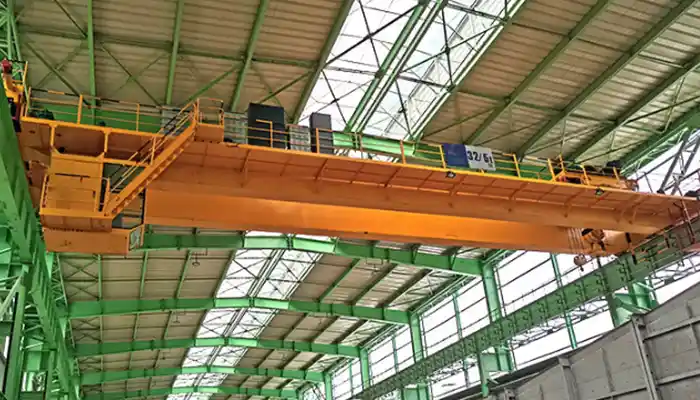
32 ton/5 ton overhead crane with main hook and auxiliary hook
Factors Affecting Crane Tonnage Selection
Types of Loads Handled
When choosing the right overhead crane tonnage, it’s important to consider the different types of loads the crane will handle:
- Light-duty loads: These are typically small, less heavy materials, such as tools, components, or packages. A crane with lower tonnage can handle these tasks efficiently without being overpowered. It’s all about precision, as these loads might not require much lifting capacity but demand smooth and accurate handling.
- Medium-duty loads: These are more substantial items, like machinery parts or materials that are heavier than light-duty loads. The crane needs a moderate tonnage capacity to handle these materials safely and efficiently without straining the system.
- Heavy-duty loads: These include large machines, steel beams, or bulk materials. For these tasks, you need an overhead crane with higher tonnage capacity to lift heavy, bulky materials with ease. The crane must have a strong and stable lifting power to ensure safety and performance.
In addition, some materials may be irregular or oversized:
- Irregular materials: These are materials that are not uniform in shape or size, like scrap metal, large machinery, or oversized components. Handling such loads requires extra care and may need a crane with specific attachments or features to ensure the load remains stable during transport.
- Oversized materials: Cranes handling oversized materials may need additional capacity or specialized hooks, slings, or spreader bars. A larger crane may be necessary to deal with these irregular loads while ensuring everything is safely lifted and moved.
Workplace Space Limitations
Another key factor in selecting overhead crane tonnage is the available space in the facility:
- Crane movement space: Your crane needs enough space to operate without obstruction. Narrow aisles, tight corners, or cluttered areas can limit the movement of the crane, potentially affecting its efficiency and performance. The crane should be sized appropriately to fit these constraints without causing safety concerns.
- Load handling space: In addition to the crane’s movement, you need to consider where loads will be moved and placed. Tight spaces might limit the crane’s range, so it’s important to choose a crane that fits within these limits while still providing enough lifting power.
- Ceiling height: Low ceiling heights can be a challenge, especially in older warehouses or factories. If the ceiling is low, a high-lifting crane may not be possible, so you’ll need a crane that can work within the height restrictions while still providing the necessary load capacity.
- Narrow aisles and compact spaces: In facilities with narrow aisles or confined spaces, a low-headroom crane with a smaller tonnage may be ideal. The crane should be able to maneuver easily, even when dealing with heavier loads.
Frequency of Crane Usage
The frequency of crane use plays a big role in selecting the right overhead crane tonnage:
- Number of lifts: The more frequent the crane lifts, the more important it is to have a durable and efficient system. If your facility requires regular lifting, an overhead crane with the right tonnage and features (like fast lifting speeds) is essential to ensure productivity.
- Duration of use: If the crane will be used for long periods, consider factors like load fatigue, which can wear down equipment faster. You may need a more robust overhead crane with a higher tonnage to handle continuous use without losing performance.
- Low-frequency vs. high-frequency operations: In a low-frequency operation, where the crane is used occasionally, a smaller tonnage may suffice. But in high-frequency operations, a higher-tonnage crane that can endure regular use and heavier loads will be necessary to maintain operational efficiency.
Load Handling Dynamics
It’s not just about lifting the load—it’s also about handling it properly. Consider these factors when selecting your crane’s tonnage:
- Load stability: Ensuring the load remains stable during the lift is crucial. An overhead crane with the proper tonnage will ensure that heavier or irregular loads remain steady, preventing accidents or damage to both the crane and the load.
- Motion control: Speed, precision, and control of the crane’s motion are important for safety and efficiency. The crane should have smooth acceleration, deceleration, and lifting speeds to minimize the swinging of loads or sudden movements.
- Load swinging control: The heavier the load, the more prone it is to swinging. This can create safety hazards or operational delays. A crane with higher tonnage and advanced control systems will help reduce load swinging and ensure a smoother, more controlled operation.
Environmental and Safety Standards
Overhead cranes must also meet various environmental and safety standards:
- Explosion-proof requirements: If the facility operates in an environment with flammable or explosive materials, the overhead crane must be explosion-proof. This means choosing a crane that is designed to prevent sparks or overheating, ensuring the safety of personnel and equipment.
- Corrosion-resistant cranes: In industries like steel mills or chemical plants, cranes may need to be corrosion-resistant due to the harsh environment. The crane’s materials and coatings must be suitable for handling the corrosive substances in the area.
- Temperature-sensitive cranes: If your facility works in extremely hot or cold conditions, you’ll need a crane that can handle these temperatures without failure. High-temperature environments might require specialized parts or cooling systems, while cold climates could require cranes designed to work in low temperatures.
- Compliance with safety standards: Whether it’s CE certification for Europe or ISO standards globally, make sure your overhead crane complies with local and international safety requirements. This ensures that the crane is built to perform safely and efficiently in your specific operational environment.
By considering all these factors, you’ll be able to choose the right overhead crane tonnage that fits your facility’s needs, ensuring safe, efficient, and long-lasting performance.
Balancing Flexibility and Performance
Adapting to Changing Needs
One of the main reasons selecting the right overhead crane tonnage is challenging is the need to adapt to changing operational requirements. As your facility grows or diversifies, your lifting needs may evolve. Here’s how to choose a crane that accommodates these changes:
- Consider future expansions: When selecting an overhead crane, it’s important to plan for potential future operations. Will your facility grow or handle larger loads in the next few years? If so, you might want to choose a crane with slightly higher tonnage than you currently need to ensure it can handle future lifting demands without the need for a replacement.
- Versatility in design: Choose a crane that offers modularity or upgrade options, so you can adjust its capacity or functionality as operations shift. For instance, cranes with adjustable features or interchangeable parts can provide flexibility as your operational needs change.
- Anticipating shifts in workload: If you foresee an increase in the types of materials you’ll handle or the volume of work, select a crane that can easily adapt. This might mean choosing one with a higher weight capacity or additional features that allow for quicker adaptation to new tasks.
By choosing a crane with enough capacity to grow with your facility, you’ll avoid the hassle of replacing equipment in the future, saving time and money.
Ensuring Efficiency
Selecting the right overhead crane tonnage is crucial for optimizing productivity and reducing downtime:
- Optimizing lifting speeds: Cranes that are too small for the task may take longer to complete lifts, reducing overall efficiency. On the other hand, a crane that is too large may operate at slower speeds, leading to wasted time. The right crane will ensure that lifting speeds are optimized to meet your operational demands, improving overall productivity.
- Minimizing downtime: Choosing a crane with the right tonnage ensures fewer breakdowns or malfunctions. A crane that works within its intended capacity will require less maintenance and have fewer issues, meaning less downtime for repairs and more uptime for your operations.
- Load optimization: A crane with proper tonnage will allow for smooth handling of loads, reducing unnecessary delays. It will also ensure that the crane’s lifting capacity is always utilized effectively, without the need for constant adjustments or delays between lifting tasks.
By ensuring the overhead crane is the right size for the job, you’ll keep your operations running smoothly and efficiently, without interruptions or wasted resources.
Overcoming Over-Sizing Risks
While it might seem like a good idea to choose a crane with a higher tonnage, there are risks to over-sizing your overhead crane:
- Unnecessary costs: A crane with more tonnage than necessary may be more expensive upfront. The higher the tonnage, the higher the initial cost, including installation and operation costs. Over-sizing a crane for tasks that don't require that much capacity can lead to wasted resources and unnecessary expenses.
- Inefficiency in operation: An oversized crane may operate slower or use more energy than needed for lighter tasks. For example, if you’re only handling light-duty loads, a larger crane with excessive tonnage will consume more power and may operate inefficiently. This can increase your operational costs, such as energy consumption and maintenance.
- Decreased control and stability: Cranes with larger tonnages may be less agile in tighter spaces or for precise lifts. In environments where fine control is essential, a higher-tonnage crane might make it harder to maneuver, causing unnecessary delays or safety concerns.
To avoid the pitfalls of over-sizing, carefully assess the typical loads and tasks your crane will handle. Choose a crane that meets your needs without excess capacity, ensuring you're not paying for more power than you actually need.
Balancing the overhead crane tonnage is all about finding the sweet spot: enough capacity to adapt to future needs and optimize performance, but not so much that you end up with unnecessary costs or inefficiency.
Calculating the Ideal Crane Tonnage for Multi-Use Operations
Assessment of Peak Load Demands
One of the first steps in selecting the right overhead crane tonnage is understanding the peak load demands of your facility. This refers to the heaviest load the crane will need to lift during normal operations. Here’s how to assess it:
- Techniques for calculating maximum lifting requirements: Start by analyzing the heaviest loads your facility handles, including both typical and peak demands. Consider using a load chart that outlines the weight of various materials, as well as any special factors such as lifting height, distance, and speed. This will give you a clear idea of the maximum load the crane needs to handle.
- Considering the highest weight capacity needed: Your overhead crane should be able to lift the heaviest item expected in your facility. If you regularly lift heavy materials like steel beams, machinery, or large parts, make sure the crane has a tonnage that matches or exceeds the heaviest possible load. Don’t forget to factor in the weight of any attachments or additional equipment that may add to the total load.
Accurate calculation of your peak load demands will help you avoid choosing an overhead crane that’s underpowered or unnecessarily over-sized, ensuring safe and efficient lifting capacity. Click to check more overhead crane capacity and how to calculate the capacity for your needs.
Choosing the Right Safety Margin
When selecting crane tonnage, it’s important not just to choose the minimum weight capacity needed, but to include a safety margin:
- Factoring in a safety margin for unexpected load increases: Cranes should always be able to handle more than their typical loads to account for unexpected situations. Whether it’s a heavier-than-expected item or an urgent operation, a safety margin gives the crane extra capacity to manage those occasional spikes in weight.
A common practice is to factor in a 20-30% safety margin on top of the maximum load you expect. This ensures that the crane operates safely and doesn’t risk damage, overheating, or malfunctioning when it encounters unusually heavy or unplanned loads.
By including this safety margin, you make sure your overhead crane can handle unexpected situations without compromising performance or safety.
Customization for Specific Applications
Not all lifting tasks are the same. In multi-use facilities, you might need to adjust the overhead crane to suit specific applications. Customizing your crane ensures that it performs well in a variety of environments.
- Adjusting crane specifications for unique tasks: If your facility handles a mix of loads—such as heavy machinery and small components—you might need specific features to optimize performance. For example, cranes designed for heavy lifting may need reinforced hooks or special lifting slings, while cranes used for precision tasks may require finer control mechanisms and adjustable lifting speeds.
- Special attachments or tools: You can increase crane adaptability by using attachments like magnetic lifters, clamps, or spreader beams. These tools allow your crane to handle irregular or oversized loads without needing to purchase multiple cranes for different tasks. A crane with specialized attachments can handle diverse materials with minimal adjustments, boosting efficiency and versatility.
Customizing your overhead crane to meet the unique demands of your facility ensures that it remains versatile enough to handle the full range of operations while maintaining peak performance.
Evaluating Crane Versatility
In a multi-use facility, versatility is key. Your crane should be able to handle a variety of loads with minimal adjustments. This allows you to use the same crane across different tasks, saving both time and money.
- Handling diverse types of loads: A versatile crane can switch between different types of materials, from heavy metal parts to lighter components, without major modifications. This adaptability ensures that your crane can support various operations, increasing your facility’s overall efficiency.
- Minimizing adjustments: Choose a crane that requires minimal adjustments to switch between tasks. Cranes with adjustable load handling systems, such as variable speed controls or remote-controlled systems, allow quick transitions between different types of loads and operations.
- Special attachments to increase adaptability: Some cranes come with optional attachments or features that improve their versatility. These may include special hooks, slings, or magnetic lifters that allow the crane to handle a wider range of materials or operational quirks.
The more versatile your overhead crane, the better it can support diverse operations with minimal downtime or modification.
By carefully assessing your peak load demands, adding a safety margin, customizing for specific tasks, and evaluating the crane’s versatility, you can calculate the ideal overhead crane tonnage for your multi-use facility. This approach ensures the crane meets both your current and future needs while maintaining efficiency and safety.
Addressing Long-Term Flexibility and Scalability
Future Expansion Considerations
When selecting the right overhead crane tonnage, it's crucial to think ahead about future growth and changes in your operations. A crane should not only meet your current needs but also be able to accommodate future expansions. Here’s how to plan for it:
- Planning for future growth: If you anticipate your facility expanding—whether through increased production volume, more complex tasks, or handling larger loads—it’s essential to choose a crane that can grow with you. A higher-tonnage crane may be more cost-effective in the long run if you foresee greater lifting demands down the road.
- New equipment or changes in operations: Changes in the types of materials you’ll handle or the introduction of new machinery could require adjustments to your crane’s capacity. By selecting a crane with some extra capacity now, you’ll be better prepared to handle these future shifts without the need for a complete overhaul.
By considering future expansion, you can ensure that your crane serves your facility for many years without needing to be replaced prematurely.
Modular Crane Systems
In facilities with ever-changing needs, modular crane systems provide a fantastic solution for flexibility and scalability:
- Benefits of modular cranes: Modular systems allow you to adjust the crane as your operational demands increase. These cranes are made up of components that can be upgraded or modified as needed, providing a scalable solution. You can add additional lifting capacity, extend the span, or improve hoisting speeds without needing to invest in an entirely new crane.
- Adjustable cranes: Some cranes come with adjustable components, such as variable lifting speeds, extendable spans, or adaptable lifting devices. This flexibility allows the crane to adapt to different lifting tasks without major changes in the system, saving you money on upgrades or new installations.
Choosing a modular crane ensures that your equipment can be upgraded over time to meet new needs without the need for a full replacement.
Upgrading Without Replacement
As your facility grows, you might need to increase your crane’s tonnage or capabilities without completely replacing the equipment. Here’s how to do it:
- Retrofitting the crane: Many overhead cranes can be retrofitted with upgraded components, allowing them to handle higher loads or different types of materials. For example, upgrading the hoist, adding new motor systems, or improving the control system can extend the life of your crane and improve its performance, all while avoiding the expense of purchasing a new crane.
- Upgrading to meet increasing demands: Instead of replacing an entire crane, you can opt for selective upgrades to boost its capacity. Adding features like heavier-duty hooks, more powerful hoisting systems, or a stronger frame can allow the crane to handle greater weights or more demanding tasks.
This strategy ensures that your crane continues to meet increasing demands while maximizing your investment in the equipment.
By addressing long-term flexibility and scalability through future expansion considerations, modular crane systems, and the ability to upgrade without replacement, you can ensure that your overhead crane will continue to perform effectively as your operations evolve. This approach offers both cost savings and operational efficiency in the long run.
Key Considerations in Selecting a Crane Supplier
Experience in Multi-Use Facility Solutions
Choosing the right crane supplier is just as important as selecting the right crane. When you’re dealing with a multi-use facility, it’s crucial to work with a supplier who has experience handling complex and diverse crane needs. Here’s why this is key:
- Expertise in diverse industries: A supplier with experience across multiple industries, like manufacturing, steel mills, warehouses, and logistics, will understand the specific challenges your facility faces. They’ll be able to recommend the right crane tonnage, features, and configurations tailored to your operations.
- Proven track record: Look for suppliers who have successfully delivered overhead crane solutions to facilities with similar operational requirements. They’ll have a better understanding of what works in multi-use environments and can offer solutions that maximize both safety and performance.
- Problem-solving capabilities: An experienced supplier can also anticipate potential issues and proactively address them, ensuring that your overhead crane meets the long-term needs of your facility.
Choosing a supplier with solid experience in multi-use crane solutions ensures that your crane is the right fit for your diverse operational tasks.
Customization Options
Every facility has unique needs. Your overhead crane should reflect that. Selecting a supplier that offers customization options is key to meeting those needs:
- Tailored crane tonnage: Not every job requires the same lifting capacity. A good supplier will work with you to determine the optimal tonnage based on your specific load requirements, available space, and frequency of use. They will provide options to customize the crane’s size, lifting height, and span to perfectly suit your operational requirements.
- Adjustable features: In addition to crane tonnage, flexibility in features is essential. A supplier should offer adjustable cranes that can evolve as your needs change over time. Whether it’s adding heavier-duty hooks, additional hoisting capabilities, or improved speed controls, a customizable crane will ensure your facility can adapt to future demands.
- Specific attachments and upgrades: Suppliers should also offer attachments or upgrades, such as magnetic lifters, clamps, or spreaders, to help tailor the crane for unique tasks in your facility. Custom features like these ensure that your crane can handle various materials without needing a completely new system.
Working with a supplier that offers customization options allows you to get a crane that’s truly designed for your specific operational needs, improving performance and efficiency.
After-Sales Support and Maintenance
The right after-sales support is crucial to keeping your overhead crane running at peak performance for years to come. Here's what you need from your supplier:
- Reliable installation and commissioning: Ensure that the supplier provides expert installation services. A poorly installed crane can lead to operational issues, so it’s important that the supplier’s team is well-versed in setup and safety standards.
- Ongoing maintenance and service: Cranes require regular maintenance to stay functional and safe. A supplier with a strong after-sales support system will offer ongoing services such as annual inspections, safety checks, and preventative maintenance to ensure your crane operates smoothly. This reduces the risk of unplanned downtime and extends the life of your equipment.
- Quick response time for repairs: When problems arise, quick and reliable service is essential. Suppliers with strong support teams can address issues promptly to minimize downtime and keep your operations running. Make sure the supplier offers 24/7 support or emergency repair services if needed.
- Training and education: Good suppliers also offer operator training to ensure that your team understands how to use and maintain the crane correctly. This minimizes accidents, reduces wear and tear, and improves overall operational efficiency.
Choosing a supplier with strong after-sales support and maintenance ensures that your crane remains operational and efficient for the long term, maximizing uptime and minimizing disruptions.
Selecting the right crane supplier is essential for the success of your multi-use facility. By choosing a supplier with experience in complex crane solutions, offering customization options for your needs, and providing excellent after-sales support and maintenance, you’ll ensure your overhead crane continues to meet your operational demands now and in the future.
Conclusion
Selecting the right overhead crane tonnage for multi-use facilities is crucial for achieving optimal performance, safety, and long-term efficiency. The key points to remember are:
- Understanding operational needs: Assess the types of loads, the frequency of use, and the available space to choose a crane that meets your facility's demands.
- Balancing flexibility and performance: Ensure the crane has enough capacity to handle peak loads, while maintaining efficiency and avoiding over-sizing that could lead to unnecessary costs.
- Planning for future growth: Choose a crane with the flexibility to adapt to future expansions and operational changes without requiring a full replacement.
Selecting the right crane tonnage not only supports day-to-day operations but also ensures that your equipment can evolve with your business, keeping you efficient, safe, and cost-effective over time.
Before making your final decision, take the time to thoroughly evaluate:
- Operational needs: Make sure the crane you choose can handle the full range of tasks in your facility.
- Safety standards: Ensure the crane complies with local and international safety regulations, such as CE and ISO certifications, to keep your team and operations safe.
- Potential for expansion: Consider how your lifting requirements might evolve in the future. Select a crane that allows for easy upgrades or adjustments without a full replacement.
A careful assessment of these factors will help you make a more informed and effective decision.
Choosing the right overhead crane is a significant investment, so it’s important to consult with experienced crane suppliers who can offer tailored solutions for your multi-use facility. Reach out to a reputable supplier today to get expert guidance and ensure you select the ideal crane tonnage to meet your needs both now and in the future.
This outline provides a structured approach to understanding and selecting the correct crane tonnage for multi-use facilities, focusing on flexibility, performance, and scalability.
